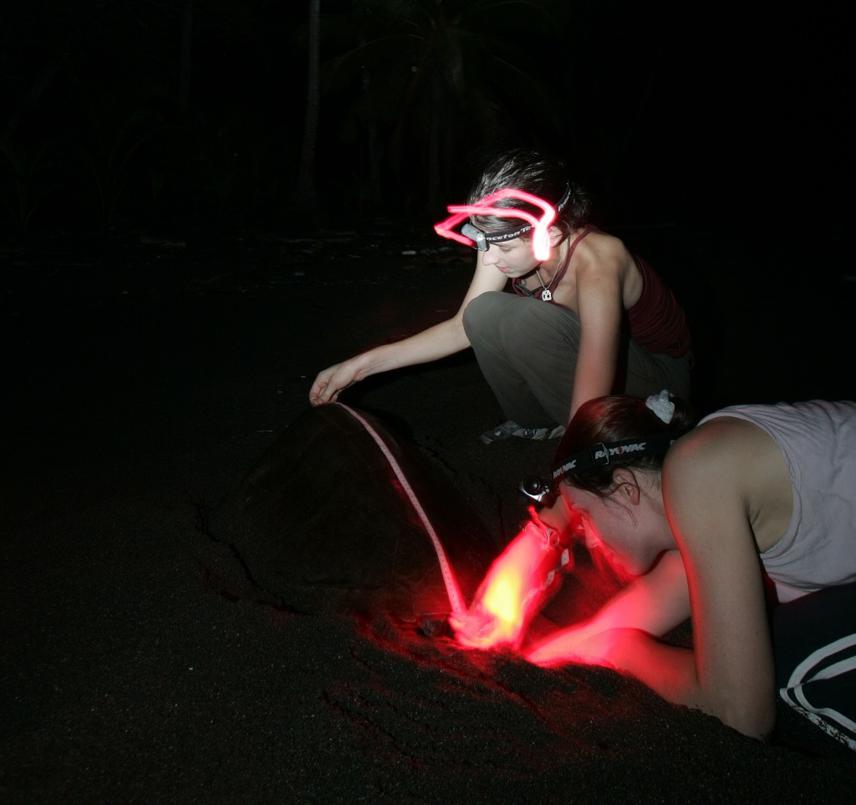Fabian Andres Sanchez Dorado
To develop a long term community-based sea turtle conservation program that guarantees healthy populations of nesting sea turtles on the Osa Peninsula; index nesting beaches Carate, Río Oro and Pejeperro.

Nesting turtle.
The Osa Peninsula Sea Turtle Conservation Program collaborates to work towards an initiative for sustainable conservation to guarantee the health of sea turtle populations that nest on Carate, Río Oro and Pejeperro beaches. These beaches have been established as “index beaches” or nesting areas where nesting events are numerous each season (>4000). There are four species of sea turtles that nest on these beaches: the Olive Ridley, Lepidochelys olivacea (being the most common turtle to nest in the area), the Pacific Green, Chelonia mydas agassizii, the Leatherback, Dermochelys coriacea and the Hawksbill, Eretmochelys imbricata, all of them endangered and critically endangered species. Our conservation efforts incorporate protection, research, education and the development of methodologies in the field as well as involve local beach communities (community-based conservation) as well as neighbouring areas such as Puerto Jimenez, Drake Bay.
The conservation of sea turtles is threatened by a variety of factors such as the poaching of nests by humans and by domestic or introduced animals, the loss of coastal habitat due to coastal development, tourist infrastructure and/or erosion, global climate change and industrial fishing. Because of the numerous threats affecting sea turtle conservation, we plan to develop 3 components as part of its long term sea turtle conservation program, thus:
The monitoring of beaches: Continuous beach patrols of more than 12 km of beaches which make up the index nesting area with the purpose of documenting data of nesting sea turtles, nests, clutches of eggs, hatchlings and their associated environmental parameters. Nests are protected in situ (in their natural location) as well as relocated to safer areas on the beach or to a protected hatchery.
Research: Research projects regarding the biology and ecology of sea turtles will be carried out throughout the nesting season (i.e.: natural depredation assessment, marking nests, determining the hatching success rate of individual nests in various conditions, biometry, and genetic population structure).
Education: The development of educational programs in schools or educational centres to teach the biological aspects of sea turtles and to inform the general public about how they can help with sea turtle conservation. Besides education, the local capacity formation involves training workshops for tour guides, naturalists, and people who live near nesting areas and wish to implement a non-extractive use (ecotourism activities) of this natural resource.